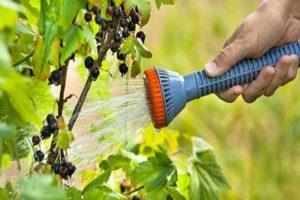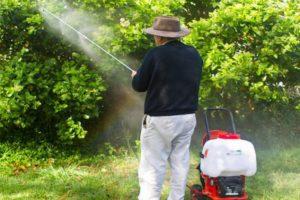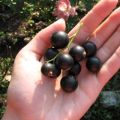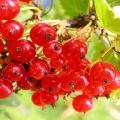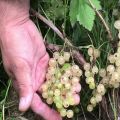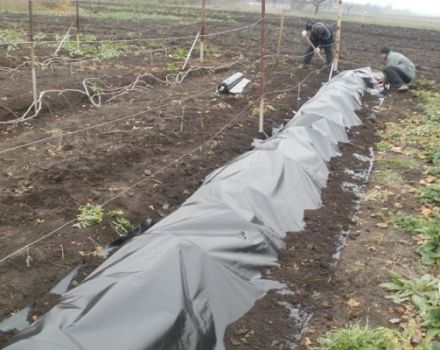Description and characteristics of varieties of pink currant, planting and care
The presence of pink currant bushes in garden plots is a rare occurrence. Such a culture appeared relatively recently, but has already managed to gain popularity among gardeners. Despite the young "age", to date, several varieties of this culture have been bred, each of which is distinguished by increased frost resistance and unpretentiousness in terms of care.
Features of pink currant
Pink currant is a subspecies of beauty. Therefore, the description and characteristics of both cultures are similar. This variety is distinguished by the following features:
- the weight of the berries varies between 0.4-1 grams;
- the fruits do not have the sourness characteristic of currants;
- berries are white or pale pink, with yellowish tints;
- the shape of the fruit is round, but sometimes it is also elongated.
Pink currants give an early to medium harvest. It is possible to collect up to 7 kilograms of berries from one adult bush.
Currants are frost-resistant, so even young plants tolerate cold well. Berries contain a whole range of useful vitamins and minerals, which are stored in fruits until temperatures below zero.
Rating and description of the best varieties
There are several varieties of pink currant. Popular varieties among gardeners include the following:
- Lyubava;
- Wonderful;
- Rossoshanskaya;
- Rose Chair;
- Pink pearls;
- Jumping;
- Dutch pink;
- Muscat pink.

Each of the listed varieties has its own advantages, which deserves a separate consideration.
Lyubava
The variety gives a bountiful harvest. Unlike other varieties of culture, the fruits of Lyubava have a slightly sour taste. This hybrid variety tolerates frost and drought well and bears fruit regularly.
Wonderful
The first ripe berries on a bush of this variety appear in early summer. Fruit size exceeds 1 centimeter. As in the case of Lyubava, the Miraculous berries are distinguished by a sweet taste with a slight sourness. One bush gives up to 9 kilograms of harvest, for which it is necessary to grow a crop in well-heated and sunny areas.
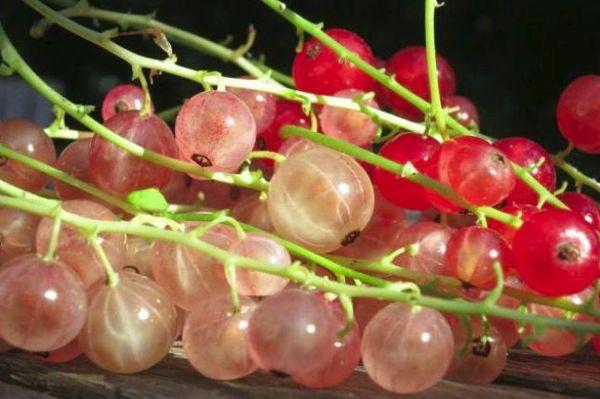
Rossoshanskaya
Rossoshanskaya currant yields in the middle of summer. Bushes are characterized by fast growth, and therefore the culture requires regular pruning. In this case, the branches do not thicken much.On average, up to 6 kilograms of berries with juicy pulp can be collected from one bush.
Rose Tea
The Rosa Chair variety is recommended to be grown in sunny areas with light soil. Under such conditions, the plant allows you to collect up to 5 kilograms of fruits, which are small in size (up to 0.8 grams). The crown of this variety of pink currant is slightly spreading. The bush gives its first harvest in the second half of summer.

Pink pearl
The currant bush of this variety reaches medium size and gives more than 7 kilograms of large and juicy berries per season without acidity. The plant tolerates dry periods well due to the branched root system. The crown is thickened, thanks to which new shoots protect the currants from sunburn.
Jumping
A variety that reaches medium size during growth, bred by Belarusian breeders. This type of culture is considered the most resistant to fungal diseases. Colored berries appear on the bush by mid-July.
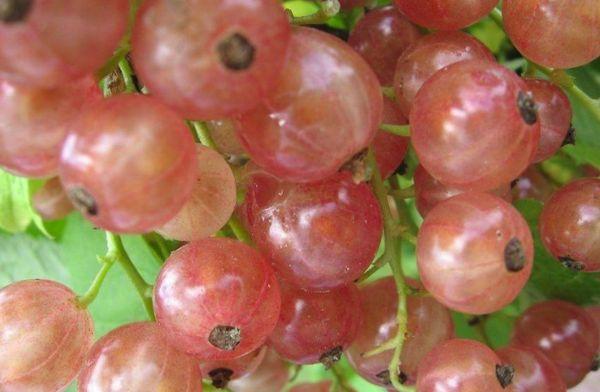
Dutch pink
Large and late ripening variety of currant. The height of the bush reaches 1.5 meters. The berries are large and do not tolerate long-term storage. Up to 9 kilograms of harvest can be harvested from one Dutch rose bush.
Muscat pink
The pink currant fruit of this variety has a nutmeg aroma. The plant gives a consistent yield when grown in sunny areas with loamy or sandy soils. The fruits of this variety are characterized by a rich raspberry color.
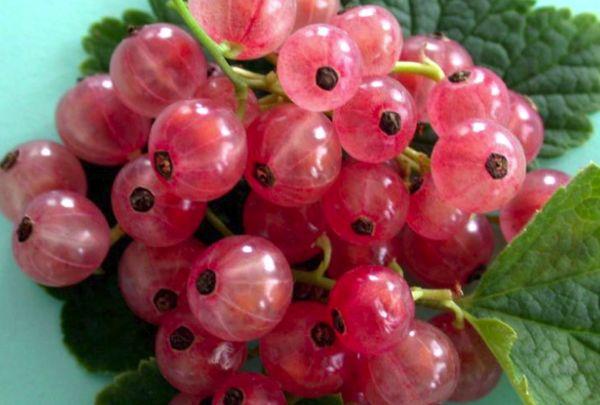
Features of planting pink currants
Pink currant is considered an unpretentious plant, so planting a crop usually does not cause problems.
Selection of seedlings
When choosing seedlings, it is recommended to give preference to 1- or 2-year-old crops (the length of the shoots varies from 25 to 30 centimeters), adapted to the specific growing conditions (region). Before buying a crop, you should inspect the root system. You should not buy seedlings with damaged or rotted shoots. In the case of long-term transportation, before planting, the culture is placed in water for 2-3 days.
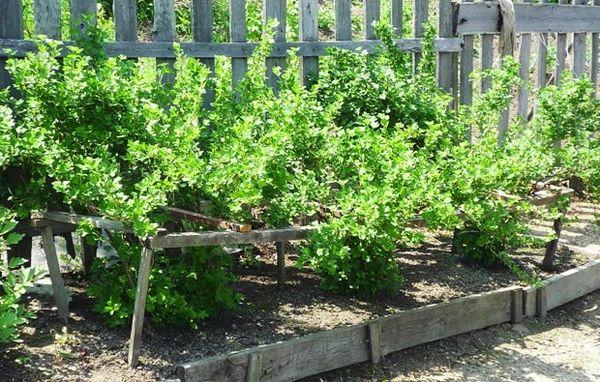
We select the best place
Pink currants give a stable yield when grown in sunny areas protected from strong winds. It is recommended to plant the plant on loamy soils with a neutral or slightly acidic reaction. After planting in often swampy areas, the root system of the crop quickly decays.
Preparing the soil and planting pit
It is preliminarily recommended to dig up the bed by removing the weeds. 2-3 weeks before planting the seedlings, manure, wood ash, compost or potassium-phosphorus fertilizers should be added to the soil.
The size of the hole for the plant is determined depending on the development of the root system. On average, holes are dug 0.5 meters in depth and width.
Planting technology and timing
Pink currants are recommended to be planted in the first half of autumn. During this time, the plant will have time to get stronger before the onset of frost.
The seedlings are planted in prepared holes at an angle of 45 degrees and at a distance of 1 meter from each other. The neck should be 5-7 centimeters deep. This will allow the currants to form the desired crown and increase the yield of the bush. After planting, the soil around the plant is compacted and abundantly moistened.
At the end of the manipulations, the bush is cut so that no more than three buds remain. After that, the soil is mulched using peat or straw. This procedure must be repeated after three days.
Care requirements
Most varieties of pink currant tolerate the negative effects of the external environment. However, without proper care, the plant will die.
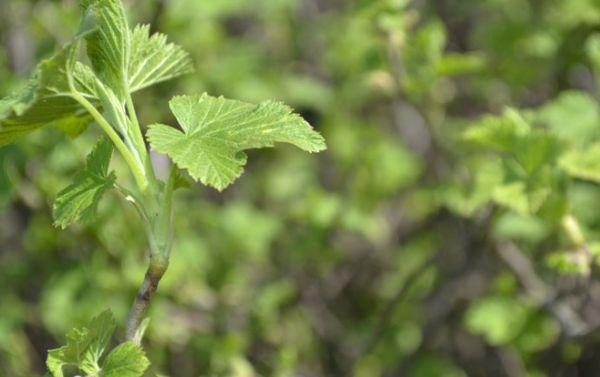
Watering and feeding
The plant requires abundant moisture.During the dry season, each bush should be watered weekly using up to 50 liters of water, and the currants should be sprayed. After such treatment, the soil should be loosened.
Organic and nitrogen-potassium-phosphorus fertilizers are used as top dressing of the culture, which are applied no more than four times a year: in spring, during flowering and laying of berries, after harvesting.
Bush formation
Cutting pink currants is recommended shortly before the onset of frost or in early spring. Old and dead branches should be removed annually, leaving no more than 15 branches on the bush. After such processing, you need to coat the cut sites with garden varnish.
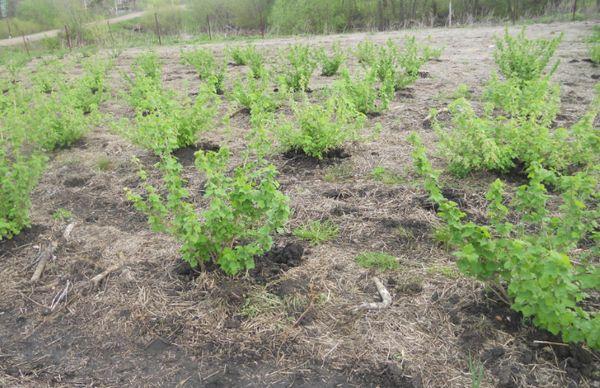
Preventive treatment against insects and pests
In order to prevent infection, the bushes are treated with boiling water in spring. If infected leaves are found, the latter are removed. If parasitic insects appear on the bush, the plant must be treated with insecticides.
Features of culture reproduction
This culture propagates by dividing the bush or by young layering. In the second case, the shoots are pressed to the ground. As soon as the layers take root in a new place, the plant is dug up and transplanted.
Also, the culture is propagated by cuttings and seeds. The first option is the simplest. New cuttings should be cut from the bush in early spring and planted in a new place, burying 4 or more buds in the soil. After that, the plant is watered and mulched.
